When I caught up with our long-term collaborator Matt Dandurand of Media Contour the other day he mentioned that he came across a breed of hilariously ‘mis-named’ IT companies. He had to share this phenomenon with me as it was very hilarious, yet so awfully sad at the same time, and he insisted that I dedicate a blog post to it that can turn this whole thing into something educational for my readers.
I was doubtful.
Then Matt shared how, during some research he was conducting on IT companies, he came across a company named ‘Blue IT’. He thought it was funny, especially when typing the url. A quick Google search later he found a slew of them that blew it, all the same way.
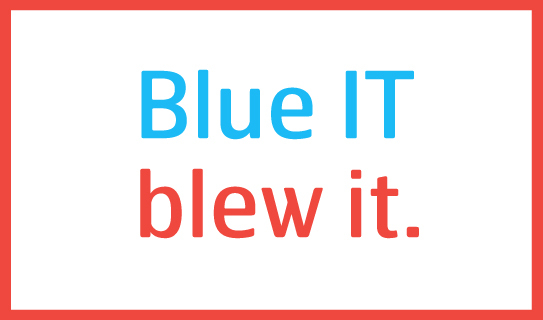
Now I am not in the business of picking on a random company’s name, it seems a bit cheap, but I do feel this serves as a great pointer to the fact that naming is to be taken seriously, regardless of company size and industry. Ample time needs to be spent to ensure, yes, that you don’t blow it. This guide will help you. It focuses on what makes a great brand name, now that we know what makes an unfortunate one.

I write about branding and not about politics. Not because I don’t have a viewpoint, but because there are many smart(er) people discussing politics, and I am smart enough not to touch the subject of politics in my professional life. That being said, last week’s rampage of a disturbed 22 year old in a California college town (who legally purchased his guns despite known doubts about his mental state) was yet another one of many gun-amok stories we read on a nearly weekly basis in the United States. This is about politics, yes, clearly, but providing a solution to it is about society, intervention and invention, something I do like writing about.
Solutions are being brought to the table by amazing entrepreneurs (and funded by Silicon Valley VCs), such as the smart gun, but since the gun lobby won’t give in anytime soon, we won’t see these products disrupt the market. Now it is up to us brilliant civilians to intervene. If we can not stop guns from being freely accessible to anyone, what can be done to prevent these crimes from happening? Today I find this question more exciting than other disruptive innovation conversations, which for anyone who follows my thoughts knows that these are usually the conversations I enjoy the most. In times where apps can be written overnight to assist most any specific pain point, and Google (as a whole) can detect nearly anyone and anything online, how can it be that a clear plan of this attack was posted on YouTube a day prior to the massacre happening, and yet it still did happen?
Why can’t there be a search app, like mention, that specifically sifts through social media for phrases detecting sociopath attacks like these? Seems like it could be created easily and monitored by volunteer analysts. Call me naive, and it very well will not be quite that simple, but I have absolutely no doubt in my mind that some of the brilliant people reading this post can come up with an MVP that can be pushed into a live beta very quickly. If the ROI we see is one single potentially saved life, I feel that this in itself would be worth the effort. The government and the NRA let us down, now we look at you Silicon Valley; not because you are an easy target in 2014, but because I for one truly believe that at least the temporary ‘solution’ to disrupt this vicious cycle lies in the talented hands of a single programmer or an outraged entrepreneur. And there is no place better to look for that than in Silicon Valley.
CATEGORIES: Blog Startup Advice
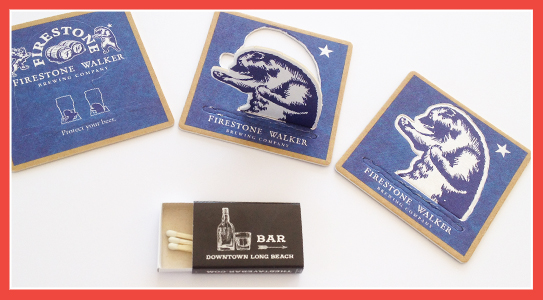
The more online your brand, the more digital your product, the more offline you should think.
Let me explain.
There is an obvious backward trend happening: Kids love cheap plastic skateboards again. All the hard work of creating gears for bikes is thrown out for fixies, and the hottest Silicon Valley investment is…artisanal coffee shops. Small batch gin producers are next in line. Stihl chain saws only sell through their own little stores, 8,500 of them in the US. You won’t find their products online or at major home-improvement stores, and it’s working great.
Why? Because today offline is special, it is different. It is tangible and it is memorable. You don’t ‘like’, but you actually truly enjoy a brand. You don’t hit ‘share’ like you hit snooze on your alarm clock, instead, you have a real conversation with people who trust you about a brand. Now that we are all well versed with pay-per-click ads and (finally) Social Media, it is time to hit the Pause-button and think about what it is that makes your brand special and how to best engage with your audience in your outreach. How will you create memorable, perhaps even inventive, inspirational campaigns?
The best place to look for inspiration is in the most offline of places: Bars. Firestone Walker’s beer coasters (above via crappy iPhone photo by yours truly) are every bit on-brand, while starting a clever conversation about defending ones beer. Remember grabbing matches in restaurants on your way out, back when we were all smoking like chimneys? As we changed our habits, so have restauranteurs and those fun and useful souvenirs have all but disappeared, making them a novelty now. A local bar down the street from our office goes back to basics by offering matches (pictured above) with the most rudimentary and anti-brand (hence memorable) call to action.
Traditional marketing indeed can be seen as a novelty today, and if treated in a unique way, and matched with the core values and personality of your brand, you might agree that retro is the new now, and offline the new online; even for your digital-first brand. If you can pull of ‘the matchbox trick’, remaining on your customer’s mind daily for months, I let you crunch the big data numbers on that one, but I feel you’d see a new type of ROI. So when you gear up for your marketing outreach, perhaps go single-gear and stand out instead.
CATEGORIES: Your Brand Launch: Brand Atmosphere Your Brand Launch: Brand Strategy Your Brand Launch: Digital
It’s not quite as harsh as it sounds, but yes, I would like for you to imagine your new venture’s death. Here is why.
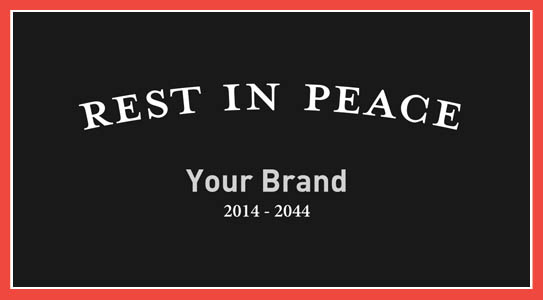
Not a proprietary exercise to my consultancy, writing a memorial speech for your brand during the Brand Foundation stage is a cruel, yet crucial step in defining your brand’s lasting values, and has been a staple in early brand development for many brand strategists. Given that those speeches are short, to the point, and always focus on only the best one has to say about the deceased, it is a great opportunity to dig deeper (did not mean for this pun to happen) into the soul and its bigger, social purpose. A brand can only leave a lasting positive impact if it cared to make a difference in people’s lives.
This is why a memorial speech is an extremely fruitful, imaginative, and most of the times rather entertaining exercise to be doing at the very onset of your brand development; and you can rarely say that about a memorial speech.
Over time we uncovered a secondary, but equally important finding during the exercise: The realization that you need to ponder about how your venture will die. And that uncovers the real long term vision for your brand: Will it be bought by Costco, improved upon and distributed to the masses? Will it become part of Marissa Mayer’s tech portfolio, giving you a nice financial push (and we don’t quite know what Yahoo! might do with it)? What is your dream, way past your 5 or 10 year business plan? If it has to end, how would you want it to end? That insight will help shape the overall business and brand strategy.
And here you thought I wanted to harm your newborn venture, while I want to do the exact opposite – watch it grow through planned retirement towards a happy ending.
Many tech startup founders pitch their project by saying ‘It’s just like Instagram, but with [filling in their differentiator],’ or, ‘Imagine Pinterest, but only [filling in their differentiator]’. Quite peculiar, most of them are located in places like Silicon Alley, Silicon Hill or Silicon Forest.
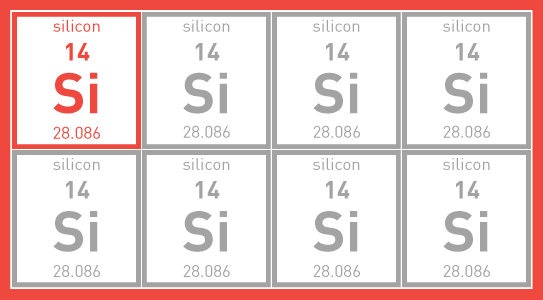
With ‘startup’ being the thing to do for many (particularly right out of college) this hot minute, it is the idea of starting something (anything really) that is often greater than the business idea in itself. Innovations turned into variations of the same, leaving the invention behind, while startup meccas themselves turned to cloned names: Silicon Alley (New York), Silicon Beach (Los Angeles’ West Side – Note: we pushed for the name Tech Coast), Silicon Roundabout (London), Silicon Forest (Portland), Silicon Hill (Washington D.C.) not to be mistaken with Silicon Hills (Austin), Silicon Border (Mexicali), Silicon Sloboda (Moscow) and many more.
Silicon Valley was named after the prosperous semiconductor manufacturers that were inhabiting the surrounding San Francisco area in the 1970’s. Today, as too many Silicon Valley clones are churning out too many Snapchat clones, it is time to remind ourselves what Silicon Valley was named after: An element; and there are no two elements that are alike. Silicon as an element only exists once. The periodic table is yours to experiment with.
Time to get creative. I can’t wait to hear about, better yet, be part of that journey.
Want to get more customers? Are you purchasing pay-per-click ads? Planning to exhibit at a conference? Rolling out some print-ad campaigns? Cold-calling perhaps? Interns acting as 24/7 Social Media Experts?
Stop whatever you are doing and think inside the box. That is, the very screen in front of you.
New ventures spend a vast amount of time and money pushing people towards their landing pages in order to get them to opt in, download an app or make a purchase. Makes sense. This is what it’s all about: Gaining Customers, Leads and Followers, quickly. The best proof of concept you can possibly get.
Yet they do not even spend a fraction of that time or money analyzing – I am not talking about A/B testing here – if that entry point actually talks the talk and looks the look.
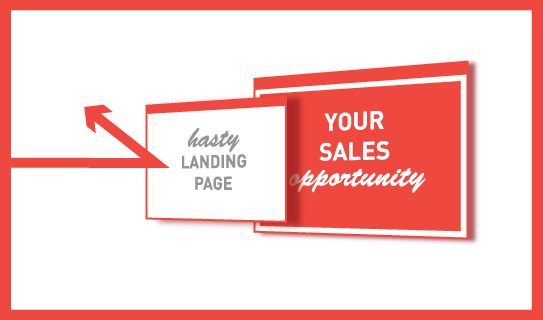
In order to attract, you have to be attractive and not just beg for clicks. I know many ad agency execs who hate seeing their clients waste tremendous amounts of money on online media buys (a dying breed in itself) that point to horribly off-brand (design and message) landing pages. They are called landing pages because that is exactly what people do: They land, and then they take off again, into any direction, just not down the purchasing funnel. Instead of being appealing entry points, those often are quite appalling afterthoughts. It’s like throwing a party and you spend all the time and money on inviting loads of very cool and attractive people, and as the day comes around you don’t even clean the house or have cold drinks ready.
If you want to get more customers, put yourself in their shoes first and work until you get yourself to click that buy, submit or follow button on your (let’s call them…) entry pages. Only then should you even consider looking for new customers ‘by entry of’ your web site, which, really, is the main entrance to your brand today.
Make that house look like it has never looked before. Polish that glossy red door and put your name on it. This is the time to shine and to let people in.
Happy spring-cleaning!
To find out, ask yourself this simple question:
What Is Your Brand’s Scent?
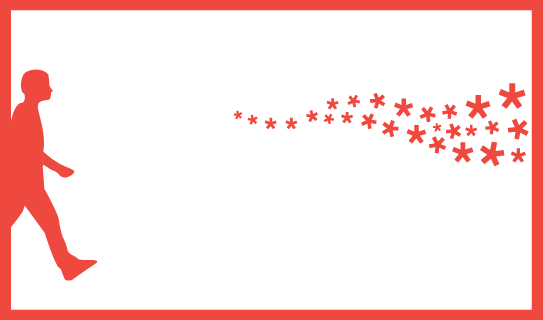
I am not referring to the overwhelming perfume infused air you have to walk through when entering an Abercrombie & Fitch store (a scented brand environment). I am talking about the metaphoric scent your brand emits to attract, distract, or utterly confuse your audience.
During a delightful call with Stuart MacDonald (Freshbooks’ CMO) earlier this week, Stuart used the word ‘scent’ when we talked about branding. It really hit home. Like animals, we are attracted to scents, in the literal and metaphoric fashion. Nike emits the scent of inspiration and innovation for athletes, Oprah the scent of belonging and community.
When thinking about your brand, and why customers will be attracted to it, think about what scent your brand has. It will make you think beyond logo, beyond copy, beyond imagery and campaigns. You will have to take a step back and start to interact with your brand from afar, as if it was the very first time you ever ‘smelled it’. I hope it smells like roses, unless roses are not really your brand.
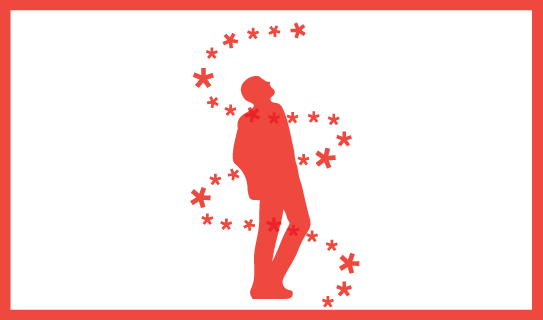
The closer you will get to your brand, the stronger and more intense (= focused) the scent will get, and once you are deeply immersed in it you will realize if you are in fact emitting the right scent altogether. It’s powerful. Try it today and let me know how it educated your actions.
CATEGORIES: Blog Startup Advice Your Brand Launch: Brand Atmosphere Your Brand Launch: Brand Strategy
Your new brand is not yours, it is your customer’s. Then let’s give the people what they want. Sounds rational, but it’s not that easy.
People do not know what they want when it comes to new brands. We do not know how to venture into the unknown with brands, we tend to seek comfort only in the familiar, and the familiar is far from aspiration or disruption. To look ahead and to launch something new you need to charter into the unknown.
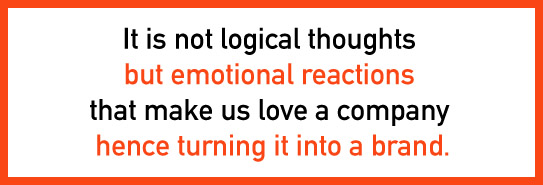
A client shared with me the other day, that they will test two variations of their new brand in an A/B test with their audience prior to deciding which they should actually go with. From an analytics point of view it makes total sense: test two brands (the logo, look & feel, voice Etc) with the audience and see which one they prefer. Yes you will confuse some, but heck, worth the data.
I strongly advised against it.
The problem is that branding is far removed from analytics. It is not logical thoughts, but emotional reactions that make us love a company or product, hence turning it into a brand. Further, befriending and adapting a new venture as a brand happens over time. Yes, you will immediately know if you need the product, you might even decide you want the product, but to fall in love with the brand, that does not happen in an instant, not in an A/B test, and, you very well may disagree with me on this, not in a focus group.
Do you think a white swoosh on bright red is a good solution for a new sugary caramel/caffeine syrup-based soft drink? Nah, we would all rationally agree that beige bubbles would visually translate the taste much better. Done. Death of the Coca-Cola brand by committee.
Brand creation by committee is not the solution. Brand creation through A/B tests is not a guarantee for success (but a sure way to confuse customers and staff). Brand building based on a solid brand strategy (research and insights) mixed with honest gut feelings is the formula for success, and for that to happen it takes a founder’s complete trust in her brand consultant and herself, as well as a boatload of courage. This might just be the reason why you see so many focus groups and A/B tests.
On this blog I already talked about what makes a name successful and how to pick a domain name, but many of you ask if I find a fabricated name to be superior to a descriptive name, and how to best navigate the types of names that one can consider, quickly. Short and actionable, I’ll give one sentence of advice on each type of name. 3, 2, 1, go:
Example: Match.com
Advice: Great as it immediately conveys what it is/does – only if you will never expand your product offerings – but limiting and hard to find a sound domain name
Example: Puma
Advice: Not a top choice as existing connotations, domain name difficulties and Search Engine results can quickly come in the way for a new company
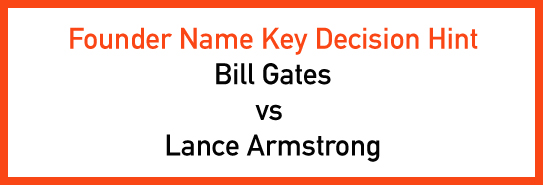
Example: The Bill & Melinda Gates Foundation
Advice: Great if you are the brand, you already have a legacy and if you are Bill, and not Lance
Example: FINIEN
Advice: It’s genius, of course! In all seriousness, it is a great path, if easy to pronounce and recall, and backed by a great story
Example: AOL (America On-Line, Remember?)
Advice: A solid option to sound like a larger company from the start; only if your customers can recall your letters and if you can get hold of a reasonable domain name (sorry, three- or four-letter combos are all sold out)
Example: Wanelo (Want, Need, Love)
Advice: Great option if tied to a tag line – otherwise the same criteria applies as with Fabricated names
Example: Lyft
Advice: Don’t do it, it’s pure laziness – unless word of mouth is not important to you (Wait, you spell it just like Supply but with a v instead of the u?) and you cater solely to ages 18-28
Example: 7-Eleven
Advice: Don’t do it out of laziness (I picked our street number, easy does it) as no one will recall it – do it only if you can create shared meaning (7-Eleven: open 7 – 11, 7 days a week) or showcase value (Social 123 – easy as 1-2-3). See my post on numeric names for details.
There you go – no more excuses. Just do it, or dig deeper via our white paper, or if all fails (or you have better things to do, like starting a business) call me for help, or call us for hands-on naming magic.
Ask yourself: Am I about to launch a product/service, or a brand?
How would you know?
You may not have a direct competitor yet, but you soon will. When the innovative, new and unique wears off, competitors will offer your product at a lower cost. How will you keep your customers from choosing their product instead? What will it be that will make your offering stick? Too many startups have to re-invent, re-brand and re-connect once they find traction – at a high cost.
If you have a unique offering combined with ‘the stick’ – the set of true differentiators, the emotional connectors that deliver from the inside out, consistently on message (visually and verbally) and on target – you know you have a brand. Having that foundational special ingredient is like a survival formula for your startup, it will make customers come sooner, faster and stay around even if they could save a few bucks elsewhere later on.
@i_mdoughboy tweeted the following last week about my consultancy’s process chart (see below): Guess where the value is? Here’s a hint – the graphic is eerily similar to a bullseye.
Imagine you are a gifted craftsman that has mastered a unique design that you developed over the course of years just to sell very few and at a high price as you don’t have the audience nor infrastructure. You created something truly unique that only you offer. After years of work, but only a few units sold, you see your design offered at a fraction of the cost at a large retail chain. It happens daily. Examples are too many to give, from apps to shoes to frozen yogurts, and all across B2B services. The only real life insurance you can have, besides a unique product/service to start out with, and its correlating trademarks, is to have that ‘stick’, those emotional brand differentiators that spread across product, service and your Brand Atmosphere. Those are hard to replicate.
If they like your product/service, they might come and purchase it.
If they love your brand, they will come and purchase it, return to it, and stay with it.
(Only read further if this hits home and you are an entrepreneur that is looking for their offering’s ‘stick’)
Avoiding the trap is hard to do for startups, being strapped thin on time and money, hence they often launch blindly, solely focusing on the uniqueness of their offering and not that of their brand. We saw this as a huge issue facing early stage entrepreneurs. Over the course of the last 6 months (based on our 12 years of experience running a branding and design agency, and with the help of writing a book on the subject) we were able to create an affordable ‘overnight’ remedy to avoid that trap. This is a huge reveal for us, which I am thrilled to share with you via this post: Meet our Resonaid™ Brand Foundation workshop, where I spend a full day with you, one-on-one working through a proven, proprietary process to find the path for your new brand to emotionally connect with your customers from the get-go and for the long term. I have one date left available this month and a few in April. Contact me via fgeyrhalter@finien.com if you are interested in learning more about this customized workshop to find the brand ‘stick’ for your startup.
PS: Yes, there is a great book entitled ‘Made To Stick.’ You should pick it up, it discusses why some ideas thrive while others die. Rather appropriate in this context.